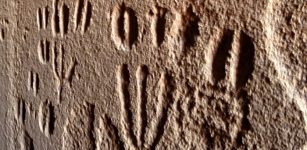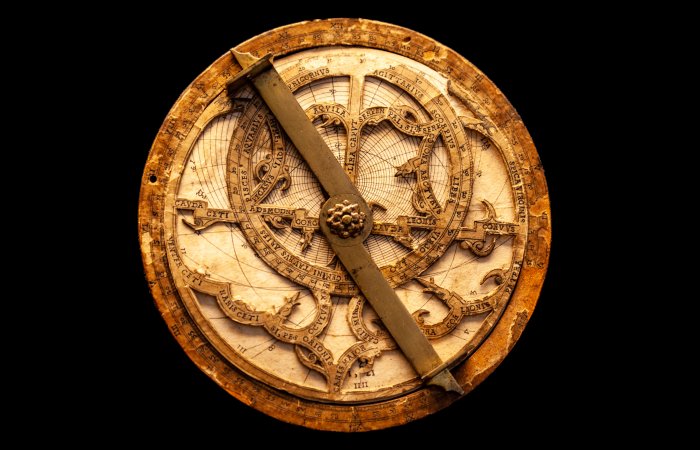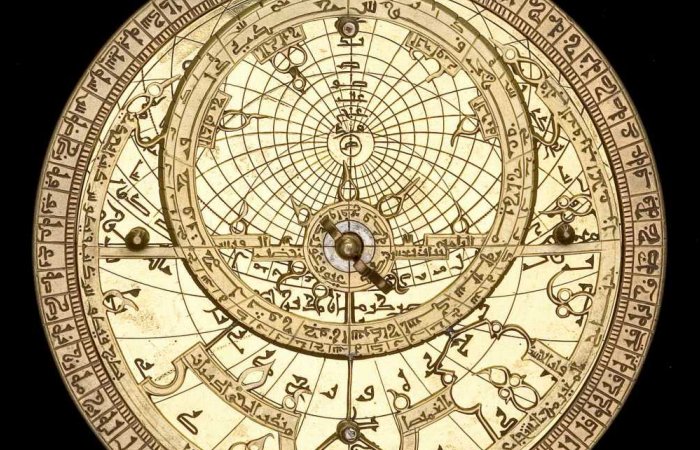Astrolabe: A Beautiful, Mysterious And Sophisticated Computer Of The Ancient World
A. Sutherland - AncientPages.com - The astrolabe is a beautiful ancient object. It is fair to say it is an instrument with a past and future. It is also a sophisticated ancient astronomical computer especially created for solving problems related to time and the position of the Sun and stars in the sky.
Credit: Adobe Stock - markrhiggins
In most cases, the astrolabes were made of brass and had a 6-inch diameter. Some of the objects were much larger.
The oldest astrolabes date back to two thousand years ago. Among the most popular types is the planispheric astrolabe, on which the celestial sphere is projected onto the plane of the equator. Despite being created at a time when people thought that the Earth was the center of the universe, the astrolabe is a useful ancient tool.
The object operates on the same basis as any other modern computer. You provide it with data, that is, input information, and then you receive output.
Ancient people used astrolabes to find out how the sky looked at a specific place at a given time. It was done by drawing the sky on the face of the astrolabe and marking it, so positions in the sky were easy to find.
An 18th Century Persian astrolabe–maker unknown. The points of the curved spikes on the front rete plate, mark the positions of the brightest stars. The name of each star being labeled at the base of each spike. The backplate or mater is engraved with projected coordinate lines. From the Whipple Museum of the History of Science in Cambridge. Image credit: Andrew Dunn - CC BY-SA 2.0
To use an astrolabe, you adjust the moveable components to a specific date and time. Once set, much of the sky, both visible and invisible, is represented on the face of the instrument.
This clever ancient computer was mainly used to find the time during the day or night, the time of a celestial event such as sunrise or sunset, and as a reference for stellar positions.
During the late Middle Ages, it served as a primary education astronomy tool and was sometimes even used for astrological purposes.
The typical astrolabe was not a navigational instrument. However, the mariner's astrolabe was widely used in the Renaissance. The device can measure the altitude above the horizon of a celestial body, day or night, identify stars and planets, determine local latitude on land or calm seas, and survey.
Astrolabe made between 1081 and 1082. Credit: History of Science Museum - CC BY-SA 4.0
The astrolabe was important in classical antiquity, the Islamic Golden Age, and the European Middle Ages. The name 'astrolabium' refers to the so-called prismatic astrolabe, invented by the French astronomer André Danjon.
The early astrolabe was invented in the Hellenistic civilization by Apollonius of Perga between 220 and 150 BC, often attributed to Hipparchus, a Greek mathematician, geographer, and astronomer who lived in the 2nd century BC. The essential part of the astrolabe is a brass plate with the lines of the celestial body's height above the horizon. It also has azimuth lines, and the hour wheels were engraved. Through the center of the plate was a line marking the north pole of the sky.
Hypatia (c. 350–370; died 415 AD), a great ancient scholar, built many astrolabes, but she did not invent them. The astrolabe was already in use at least 500 years before Hypatia was born.
Today, the astrolabe is still admired for its beauty and appreciated for its unique capabilities and its value for astronomy education.
Written by – A. Sutherland - AncientPages.com Senior Staff Writer
Updated on March 4, 2024
Copyright © AncientPages.com All rights reserved. This material may not be published, broadcast, rewritten or redistributed in whole or part without the express written permission of AncientPages.com
Expand for referencesMore From Ancient Pages
-
 Mystery Of The Ancient Unknown Mining Civilization In North America – Puzzling Archaeological Discoveries – Part 1
Civilizations | Apr 18, 2022
Mystery Of The Ancient Unknown Mining Civilization In North America – Puzzling Archaeological Discoveries – Part 1
Civilizations | Apr 18, 2022 -
 On This Day In History: ‘Sea King’ Ragnar Lodbrok Seizes Paris – On March 28, 845
News | Mar 28, 2017
On This Day In History: ‘Sea King’ Ragnar Lodbrok Seizes Paris – On March 28, 845
News | Mar 28, 2017 -
 Mystery Of The Coal On The Pirate Shipwreck Queen Anne’s Revenge Solved
Archaeology | Apr 13, 2023
Mystery Of The Coal On The Pirate Shipwreck Queen Anne’s Revenge Solved
Archaeology | Apr 13, 2023 -
 Sacred Medicine Bundle With Relics Of The First Ancestors Or Given By The Gods
Ancient Traditions And Customs | Sep 15, 2016
Sacred Medicine Bundle With Relics Of The First Ancestors Or Given By The Gods
Ancient Traditions And Customs | Sep 15, 2016 -
 Lothal – ‘City of Dead’ – One Of The Most Prominent Ancient Places In Danger To Be Forgotten
Featured Stories | Jun 10, 2015
Lothal – ‘City of Dead’ – One Of The Most Prominent Ancient Places In Danger To Be Forgotten
Featured Stories | Jun 10, 2015 -
 Ancient Roman Coins Thought To Be Fakes Are Authentic – Experts Say
Archaeology | Nov 23, 2022
Ancient Roman Coins Thought To Be Fakes Are Authentic – Experts Say
Archaeology | Nov 23, 2022 -
 Findings From The First Temple Period Discovered In The City of David Corroborate A Biblical Event
Archaeology | May 4, 2024
Findings From The First Temple Period Discovered In The City of David Corroborate A Biblical Event
Archaeology | May 4, 2024 -
 Few Witches Were Executed In Wales In The Middle Ages – Why?
Featured Stories | Oct 29, 2024
Few Witches Were Executed In Wales In The Middle Ages – Why?
Featured Stories | Oct 29, 2024 -
 Stunning Discovery Of 1,000-Year-Old Knight’s Sword From Reign Of Poland’s First King Bolesław The Brave
Archaeology | Jul 28, 2022
Stunning Discovery Of 1,000-Year-Old Knight’s Sword From Reign Of Poland’s First King Bolesław The Brave
Archaeology | Jul 28, 2022 -
 Skeleton Of An Ancient Roman Mercenary Buried With His Sword Discovered In South Wales
Archaeology | Apr 6, 2022
Skeleton Of An Ancient Roman Mercenary Buried With His Sword Discovered In South Wales
Archaeology | Apr 6, 2022 -
 How Did The Renaissance Change Europe?
Ancient History Facts | Oct 10, 2019
How Did The Renaissance Change Europe?
Ancient History Facts | Oct 10, 2019 -
 4,000-Year-Old Babylonian Tablets Finally Deciphered, Revealing Dangerous Future Predictions
Archaeology | Aug 14, 2024
4,000-Year-Old Babylonian Tablets Finally Deciphered, Revealing Dangerous Future Predictions
Archaeology | Aug 14, 2024 -
 Ancient Mysteries In The Amazon Jungle – Strange White Men With Glowing Eyes – Part 1
Civilizations | May 28, 2018
Ancient Mysteries In The Amazon Jungle – Strange White Men With Glowing Eyes – Part 1
Civilizations | May 28, 2018 -
 Neanderthals And Modern Humans Diverged At Least 800,000 Years Ago
Archaeology | May 17, 2019
Neanderthals And Modern Humans Diverged At Least 800,000 Years Ago
Archaeology | May 17, 2019 -
 Animal Tracks And Human Footprints In Prehistoric Hunter-Gatherer Rock Art In Namibia
Archaeology | Sep 13, 2023
Animal Tracks And Human Footprints In Prehistoric Hunter-Gatherer Rock Art In Namibia
Archaeology | Sep 13, 2023 -
 Babylon Excavation Uncovers 478 Artifacts, Including Cuneiform Tablets and Seals
Archaeology | Oct 17, 2024
Babylon Excavation Uncovers 478 Artifacts, Including Cuneiform Tablets and Seals
Archaeology | Oct 17, 2024 -
 Popular Tyrant Peisistratos Tricked The Athenians To Seize Power And People Loved Him
Featured Stories | Jan 12, 2021
Popular Tyrant Peisistratos Tricked The Athenians To Seize Power And People Loved Him
Featured Stories | Jan 12, 2021 -
 Red And Black Ink Used In Egyptian Papyri Reveal Ancient Writing Practices
News | Oct 27, 2020
Red And Black Ink Used In Egyptian Papyri Reveal Ancient Writing Practices
News | Oct 27, 2020 -
 Story About Cahokia’s Lost Civilization Is Wrong – Archaeologist Says
Archaeology | Feb 14, 2020
Story About Cahokia’s Lost Civilization Is Wrong – Archaeologist Says
Archaeology | Feb 14, 2020 -
 Prehistoric Humans Recycled Old Stone Tools To Preserve The Memory Of Their Ancestors
Archaeology | Mar 17, 2022
Prehistoric Humans Recycled Old Stone Tools To Preserve The Memory Of Their Ancestors
Archaeology | Mar 17, 2022



